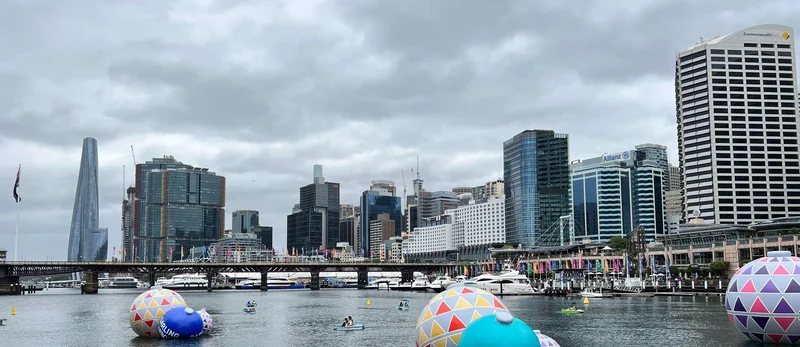With current talks of a housing crisis, there have been discussions around rent freezes, incentives to increase supply of housing or slowing down the intake of overseas migrants. But one factor which is not often discussed is Australia’s use of unoccupied dwellings.
So today, we ask the question – where are the unoccupied dwellings and why are they unoccupied? Are they significant in talks around the cost of living?
Starting with New South Wales, we will be using 2021 Census data to determine which suburbs have the highest vacancies and examine how this phenomenon changes across localities. But before we jump into the list, let’s first talk about what an unoccupied dwelling entails.
The Australian Bureau of Statistics (ABS) defines an unoccupied dwelling as “structures built specifically for living purposes which are habitable, but unoccupied on Census night”. For the purposes of producing an interesting and insightful list, we will only be including Metropolitan suburbs of Australia with greater than 200 total dwellings. Specifically, we will be using the ABS’s Suburbs and Localities geography. Note that the ABS includes the Central Coast as part of Metropolitan Sydney.
So where are these unoccupied suburbs?
Why are these vacancy rates so high?
Coastal Retreats and Pockets of Peace
You may notice that many of these suburbs lie along the Central Coast, at the edge of the commuter belt. As you may have guessed, many of these vacancies can be explained by holiday homes. For those who are particularly interested in Census data, you may also notice that as Census data is collected in August, the vacancy rates presented here are likely much higher than in January when people are more likely to be on vacation. However, not every coastal suburb is the same:
- Pearl Beach, Patonga, Pretty Beach and even Killcare are a little more ‘remote’, with large detached houses, set in an unspoiled natural environment. These areas are perfect for the retiree looking to get away from the chaos of urban life.
- Palm Beach and Whale Beach are more of a luxury retreat for the top end of town, with median weekly household incomes of $2,807 and $3,285 respectively. However, note that these figures are derived only from those who are residing there at the time of the Census.
- Copacabana and Avoca Beach have a comparatively younger, family-aged population, with a median age of 43 and 42 respectively (compared to the median age of 50-65 across the other coastal suburbs). These two localities also have larger average household sizes, with 2.8 people per household (compared to 2.2 in other coastal towns on our list).
- The Entrance, The Entrance North and Blue Bay are adjacent urban areas, with flatter land and a higher proportion of medium and higher density housing. The Entrance has more than half its dwelling stock as flats or apartments, and The Entrance North and Blue Bay have almost 50% of their dwelling stock as medium and high-density dwellings.
- Magenta is a unique area, only having been developed over the last twenty years. With a resort and backyard pools, the area is more likely to be associated with holiday vacancies.
Open for business
In the Inner City, vacancies stem from gaps in turnover between renters combined with the number of rental properties. International students and business professionals spring to mind, with these groups often needing to travel for work and stay either short-term, or for a year or two.
In particular, these aforementioned business professionals can be found in Barangaroo, Dawes Point, The Rocks and Millers Point. These areas offer access to the offices of some of the most high-profile companies along with multi-million dollar apartments. As you may imagine, this makes it a highly convenient suburb for the choice few business executives who can afford the lifestyle.
The Odd One Out
Mount Victoria is a bit of a black sheep in the top 20, not falling into the coast or city phenomenon. Located at the far end of the Blue Mountains National Park, Mount Victoria is well out of the commuter belt, with the area more than an hour to Penrith and a 2 hour commute to Sydney. However, the area shares many of the traits of the coastal areas, with a high share of holiday homes and retreats, with the Blue Mountains as your ‘extended backyard’. Note that there were several other places in the top 50 for Sydney in the Upper Blue Mountains with high vacancy rates.
Final Thoughts
With many of these unoccupied dwellings being holiday homes, do you think unoccupied houses should be discouraged?
The geographical spread of suburbs on our list suggests unoccupied dwellings are not always in places of high demand. For suburbs in the Inner City, the deceptively high share of vacant dwellings is more a sign of the transitional nature of the rental market than true unoccupied dwellings. With its role as a business hub, tourist hotspot and major international gateway to Australia, it is inevitable that there will be temporary and transient accommodation.
As for remote workers who have the flexibility to live beyond the commuter belt, time will tell whether this possibility will still be available in the next 30 years, with more and more companies announcing a return to office policy. It will also depend on the industry or occupational norms and whether more industries embrace working from home as a norm.
Let us know your thoughts and be sure to follow our LinkedIn for updates on our next instalment, where we will explore vacancies in Victoria.

